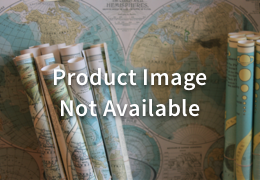
Product Details
- Product Number
- 208239
- Series
- DS-318
- Scale
- NO SCALE
- Alternate ID
- DS-318
- Authors
- PETER G CHIRICO
- Version Date
- 01/01/2007
- Media
- Electronic (Physical)
- Format
- DVD-ROM
Additional Details
- Description
- Introduction The Advanced Spaceborne Thermal Emission and Reflection Radiometer (ASTER) is an imaging instrument aboard the Terra satellite, launched on December 19, 1999, as part of the National Aeronautics and Space Administration's (NASA) Earth Observing System (EOS). The ASTER sensor consists of three subsystems: the visible and near infrared (VNIR), the shortwave infrared (SWIR), and the thermal infrared (TIR), each with a different spatial resolution (VNIR, 15 meters; SWIR, 30 meters, TIR 90 meters). The VNIR system has the capability to generate along-track stereo images that can be used to create digital elevation models (DEMs) at 30-meter resolution. Currently, the only available DEM dataset for Afghanistan is the 90-meter-resolution Shuttle Radar Topography Mission (SRTM) data. This dataset is appropriate for macroscale DEM analysis and mapping. However, ASTER provides a low cost opportunity to generate higher resolution data. For this publication, study areas were identified around populated areas and areas where higher resolution elevation data were desired to assist in natural resource assessments. The higher resolution fidelity of these DEMs can also be used for other terrain analysis including landform classification and geologic structure analysis. For this publication, ASTER scenes were processed and mosaicked to generate 36 DEMs which were created and extracted using PCI Geomatics' OrthoEngine 3D Stereo software. The ASTER images were geographically registered to Landsat data with at least 15 accurate and well distributed ground control points with a root mean square error (RMSE) of less that one pixel (15 meters). An elevation value was then assigned to each ground control point by extracting the elevation from the 90-meter SRTM data. The 36 derived DEMs demonstrate that the software correlated on nearly flat surfaces and smooth slopes accurately. Larger errors occur in cloudy and snow-covered areas, lakes, areas with steep slopes, and southeastern-facing slopes. In these areas, holes, large pits, and spikes were generated by the software during the correlation process and the automatic interpolation method. To eliminate these problems, overlapping DEMs were generated and filtered using a progressive morphologic filter. The quadrangles used to delineate the DEMs in the publication were derived from the Afghan Geodesy and Cartography Head Office's (AGCHO) 1:100,000-scale maps series quadrangles. Each DEM was clipped and assigned a name according to the associated AGCHO quadrangle name. The geospatial data included in this publication are intended to be used with any GIS software packages including, but not limited to, ESRI's ArcGIS and ERDAS IMAGINE.
- Height In Inches
- 5.500
- Length In Inches
- 5.000
- Pieces
- 1
Related Items



